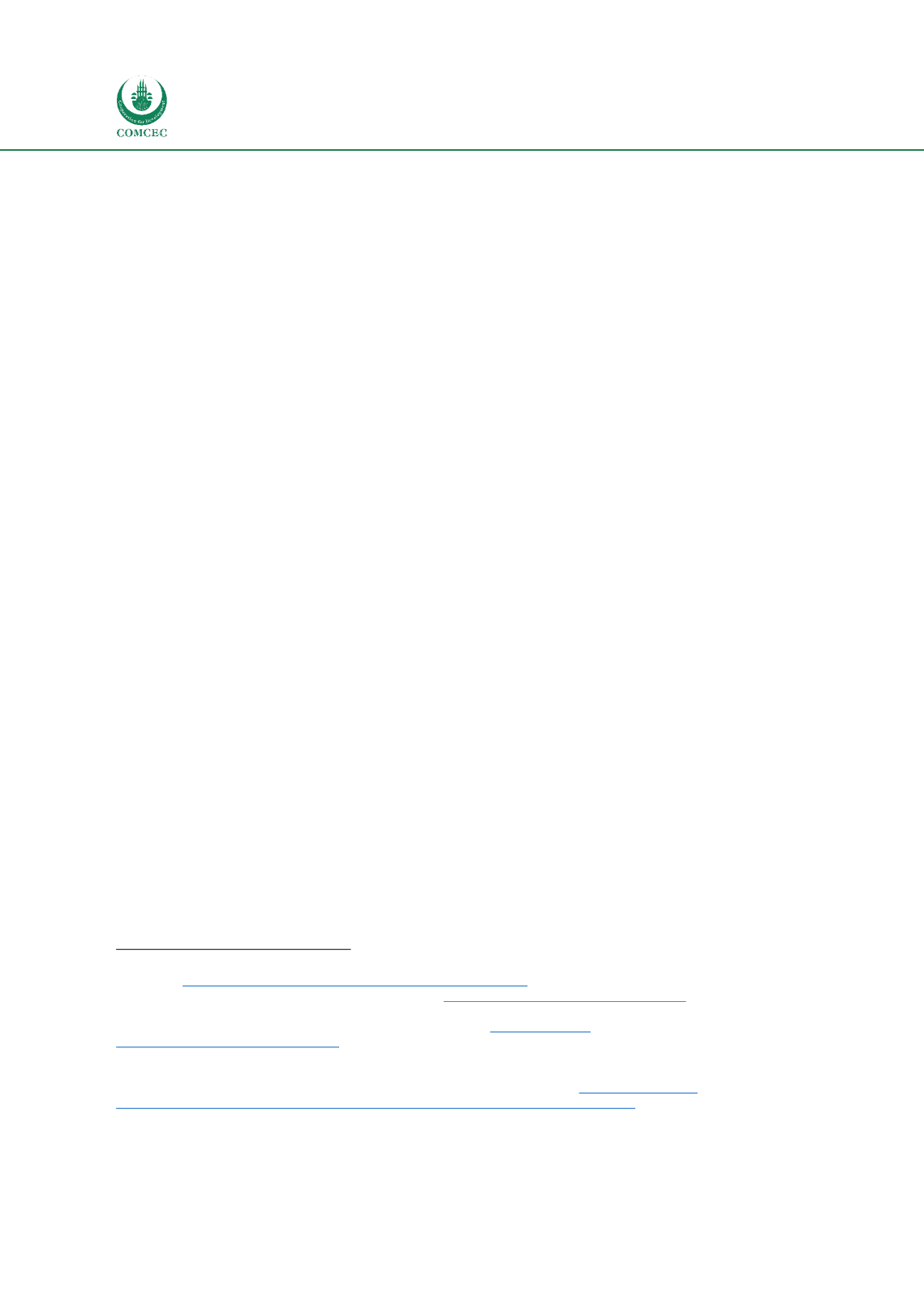

Improving Agricultural Market Performance
:
Creation and Development of Market Institutions
118
in response to increased domestic demand for meat and milk.
264
The majority of cattle (i.e.
80%) is centered in Uganda’s southern and western regions and owned by small-scale mixed
farmers. However, only half of the domestic and regional demand could be met by Uganda’s
livestock production
265
while Uganda’s livestock productivity is impeded by emerging
diseases, lack of high-quality pastures, and cattle rustling.
266
Uganda is the first certified African exporter of organic products.
267
The Uganda Organic
Standard (UOS), followed by the EAOPS and East African Organic Mark (or “Kilimohai”), were
developed and fully comply with EU regulations and standards.
268
Nearly 188,000 certified
Ugandan farmers were engaged in organic farming in 2010. Ugandan organic farming has an
extremely small-scale nature with an average of just 1.3 hectares. However, given increased
international demand, organic farming represents a high amount of foreign earnings, which
mainly includes coffee (20% Arabica and 80% Robusta), cocoa, frozen, fresh, and dried fruits
(e.g. banana’s, apples, mango’s, pineapples, and papaya), plants (e.g. ginger, vanilla, and
sesame), and cotton though the number of certified organic cotton farmers has decreased due
to Government interference. However, access of smallholder to certification remains
complicated. For instance, only 4% of the coffee smallholders are certified.
269
Organic products are being marketed to the local market through a number of processors and
retailers (e.g. supermarkets, restaurants, and open markets). Internationally, Kenyan and
South Sudanese traders and intermediaries buy directly from organic farmers while global
exports of Ugandan organic products has been challenged by high freights costs.
Policy & Regulatory Framework
Government intervention in the agricultural and food market in Uganda traditionally included
a number of participants, particularly some concerned Ministries and their state-owned
enterprises. The (predecessors of) the Ministry of Agriculture, Animal Industries, and Fisheries
(MAAIF) and Ministry of Finance, Planning, and Economic Development (MoFPED) were
particularly involved, and were supported in their market intervention activities through their
agricultural state-owned enterprises.
The Government of Uganda followed international developments and trends with respect to
market institutions and started large-scale privatization of its market institutions and state-
owned economic enterprises in the early 1990s. As mentioned in Chapter 2, the institutional
development in the agricultural market of the 1980s and 1990s is characterized as “getting the
price right” as opposed to “getting the markets right” sentiment which prevailed throughout
the 1970s and early 1980s. The focus shifted to free markets and reducing involvement and
interference of Governments in agricultural market.
270
264
FAO (2006), Country Pasture/Forage Resource Profiles,
available a
t http://www.fao.org/ag/agp/agpc/doc/counprof/uganda.htm [Accessed May 2017].
265
Government of Uganda (2017), Agriculture, available a
t http://www.gou.go.ug/content/agriculture [Accessed May
2017].
266
New Agriculturist (2012), Country profile – Uganda, available a
t http://www.new- ag.info/en/country/profile.php?a=2414 [Accessed May 2017].
267
Foreign Investment Promotion Agency (2015),
Agrifood Industry in Tunisia
, pp. 1-5, Tunis: Foreign Investment Promotion
Agency.
268
Namuwoza, C. & Tushemerirwe, H. (2011), Uganda: Country Report, available a
t http://www.organic- world.net/fileadmin/documents/yearbook/2011/namuwoza-tushmerirwe-2011-uganda.pdf[Accessed May 2017].
269
Interview conducted with Uganda Coffee Development Authority in Kampala, June 8, 2017
270
Van Trijp, H. & Ingenbleek, P. (2010), “Markets, market and developing countries: Where we stand and where we are
heading”, pp. 9-16, Wageningen: Wageningen Academic Publishers.


















